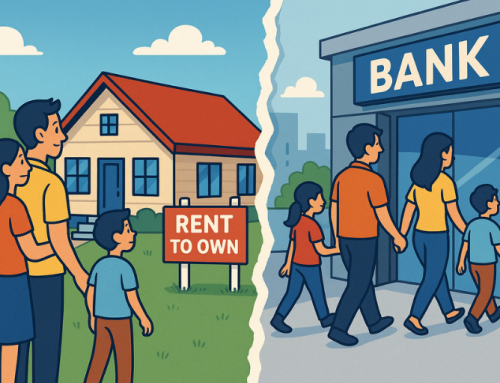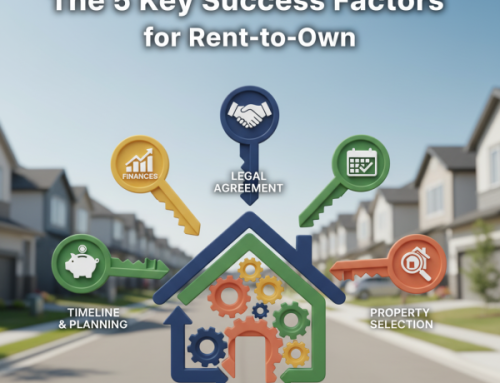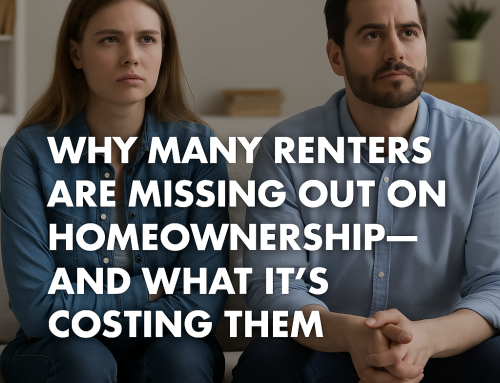Why Your Income “On Paper” Matters
As 2025 year-end approaches, it’s a great time to focus on how why your income matters.
When it comes to mortgage qualification in Canada, what lenders care about most isn’t just how much you make—it’s how that income is reported, documented, and verified, the same applies to rent-to-own.
With many Canadians now earning from multiple sources—whether it’s a side hustle, rental suite, investments, or government benefits—understanding how to present your income the right way can make the difference between an approval and a rejection.
Income Sources That Can Strengthen Your Mortgage or Rent-to-Own Application
Not all income is treated equally by lenders. The key is consistency and proof.
I spoke to someone recently who did side jobs and earned pretty good “cash” income for his efforts. Unfortunately it was his papered income that wasn’t nearly as strong and forced him into a situation where he couldn’t qualify for a mortgage as his papered income didn’t provide a big enough budget to purchase something in the area his family wanted. If he was in a position to prove his cash income, his budget could have been 100’s of thousands of dollars higher. In the end, the banks couldn’t help and neither could we as we also require provable, reportable income.
Here are some income types that may count toward your qualifying income—if properly documented.
Rental or Suite Income
Lenders often include 50% to 100% of rental income when calculating mortgage eligibility.
To qualify, you’ll typically need:
-
A signed lease agreement, and
-
A market rent report from a licensed appraiser or realtor.
If you’re renting out a basement suite or secondary unit, ensure the income is declared on your tax return—it strengthens your profile and shows reliability.
Government Benefits
Programs like CPP, OAS, or the Canada Child Benefit (CCB) can support your income picture.
To use these for mortgage qualification, provide:
-
Your latest CRA Notice of Assessment, and
-
Payment confirmations or bank statements showing deposits.
These sources are viewed as stable and long-term, especially for retirees and families with children. Banks love them and so we in rent-to-own.
Pension or Disability Income
Regular pension, disability, or annuity payments can qualify as steady income.
Be ready to show:
-
Recent T-slips, or
-
Bank statements confirming consistent deposits.
These are considered reliable sources, often accepted at 100% of their value when documentation is clear.
Investment Income
Dividends, interest, or income from non-registered investments can count—if they’re declared on your tax returns.
Lenders look for a two-year average to confirm that returns are steady, not one-time gains.
Side Hustle or Freelance Work
The side gig economy is thriving, and lenders are adjusting.
If you run a small business or freelance operation, you may qualify using:
-
Two years of tax returns showing self-employment income, and
-
Business financial statements or invoices that demonstrate consistency.
Even modest side income can increase your qualifying capacity when it’s traceable and verifiable.
Documentation Is Everything
Lenders only recognize income that’s consistent, traceable, and proven. This is why your income matters.
Having the right documentation can make a major difference in your borrowing power.
Make sure you can provide:
-
CRA Notices of Assessment or T-slips
-
Lease agreements for rental income
-
Bank statements showing steady deposits
-
Proof of business registration or invoices for self-employed work
The more complete your financial picture, the stronger your case when it’s time to apply for a mortgage or refinance. I always suggest keeping a folder with all these relevant documents so when you need them, you have them at your fingertips and can easily reference them.
The Bottom Line
As 2025 draws to a close, take time to review how your income shows and whether or not a bank would be able to use your income to provide you with a budget. If the answer is no, a rent-to-own would likely not be a better option as we also require provable income.
A few proactive steps—like filing all income sources, keeping records organized, and confirming CRA documentation—can significantly improve your mortgage or rent-to-own qualification potential in the new year.
If you’re planning to buy, refinance, or invest in 2026, now is the perfect time to get your income profile lender-ready.
Because in real estate, it’s not just what you earn—it’s how you prove it.
Want to see if you pre-qualify? Set up a call to discuss your situation?






